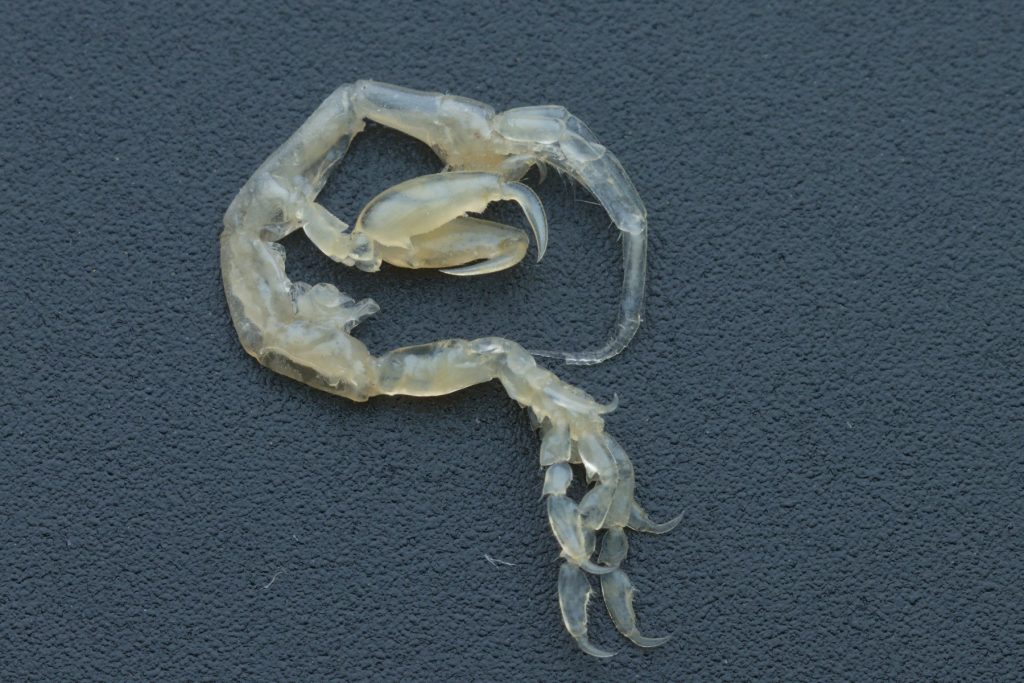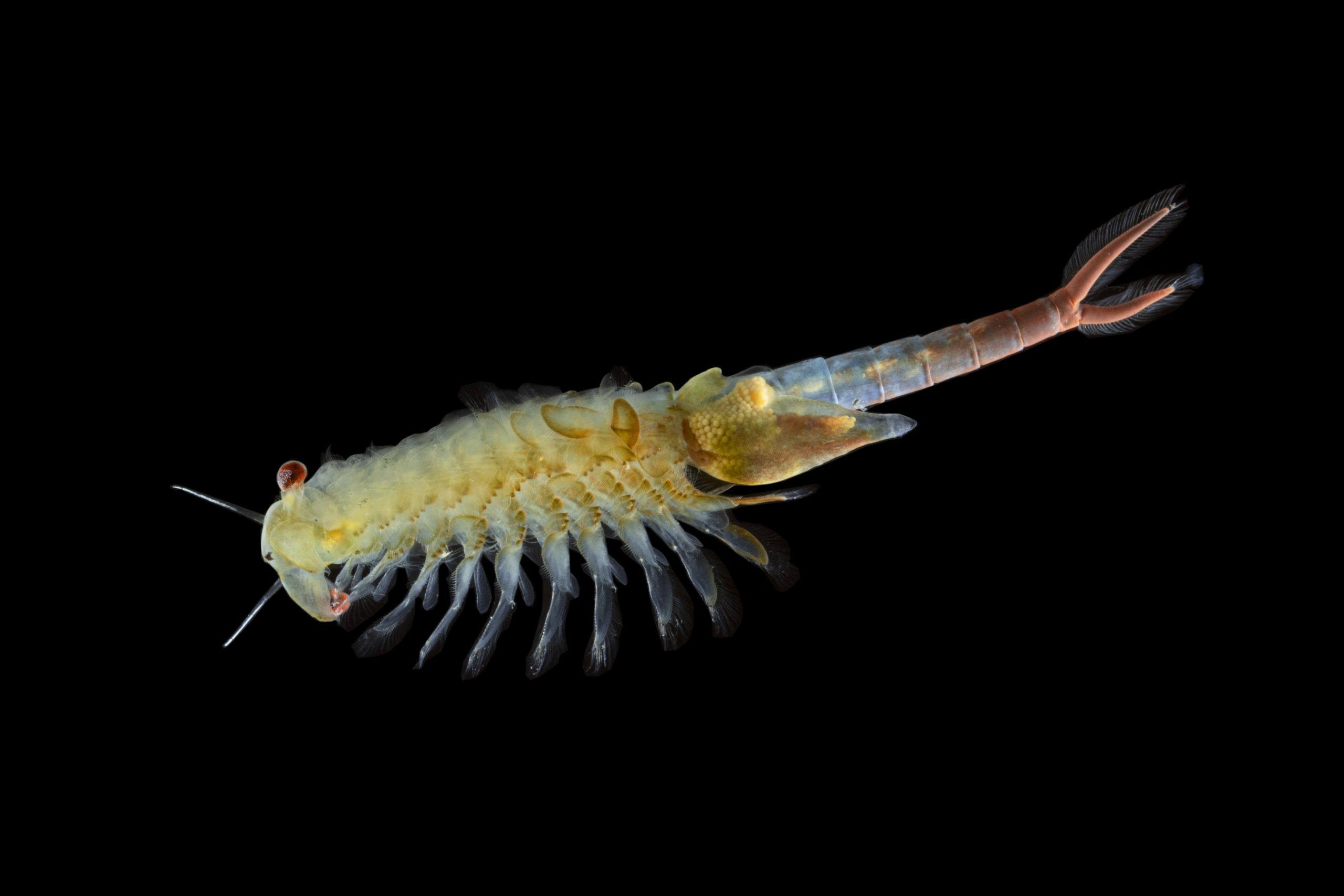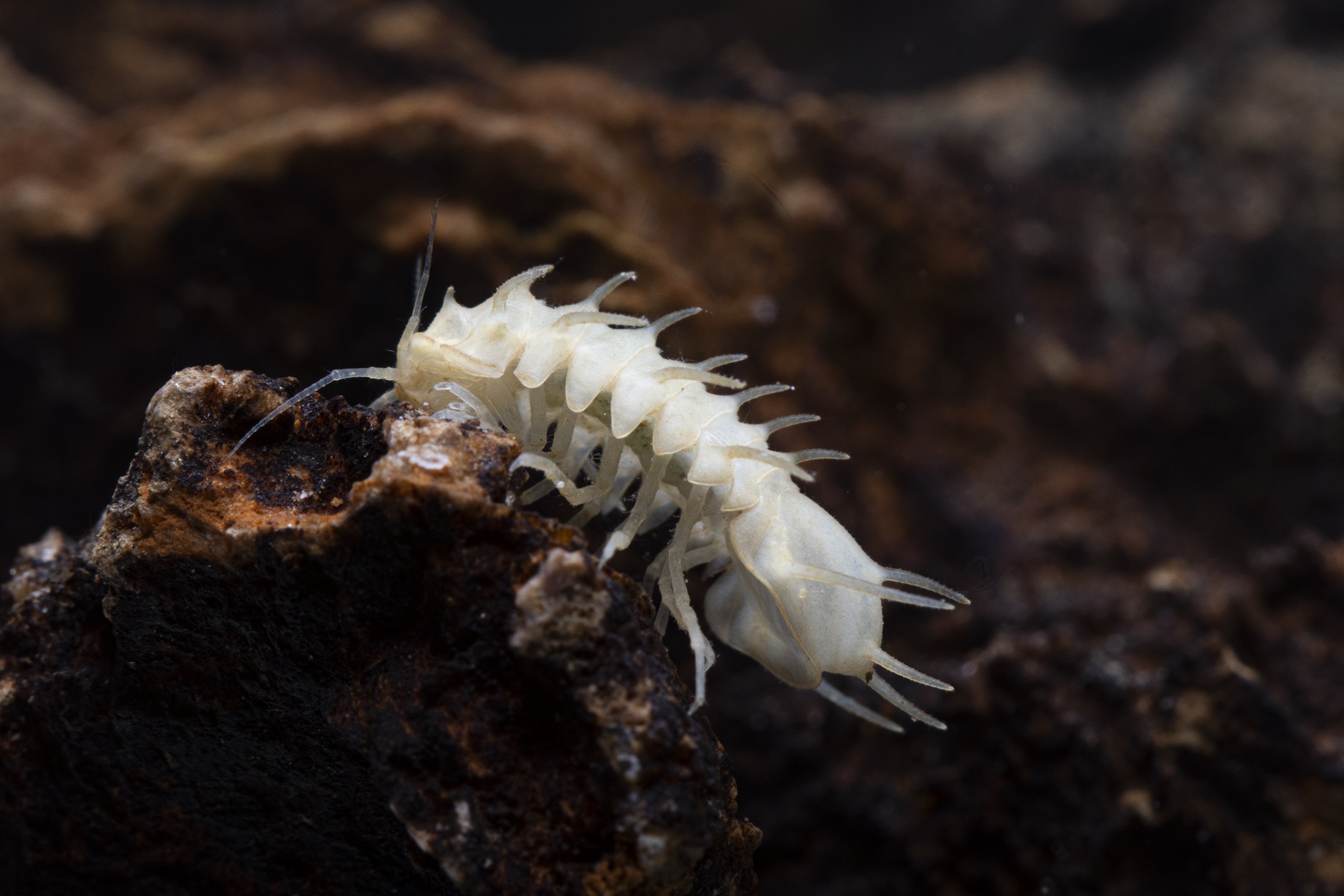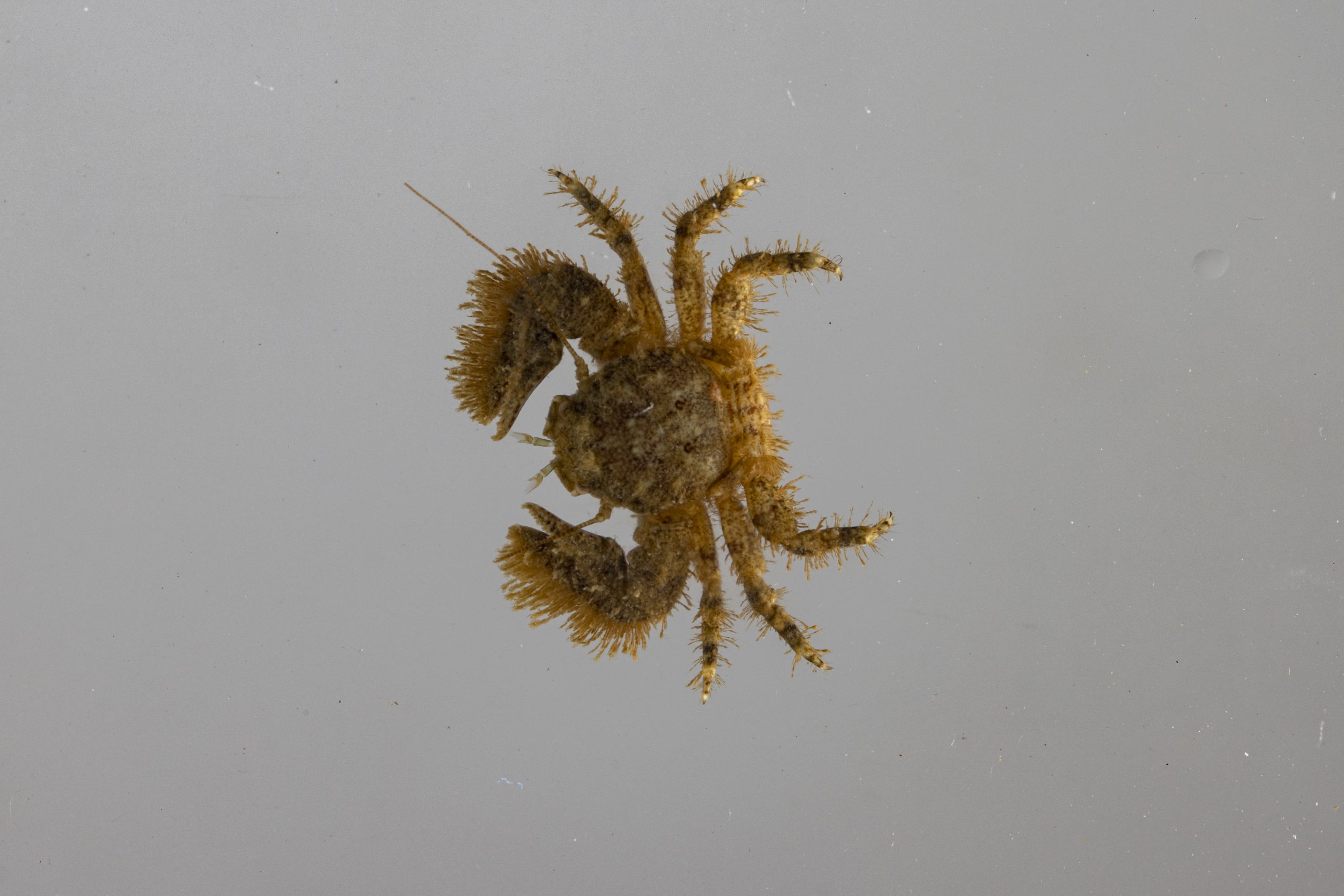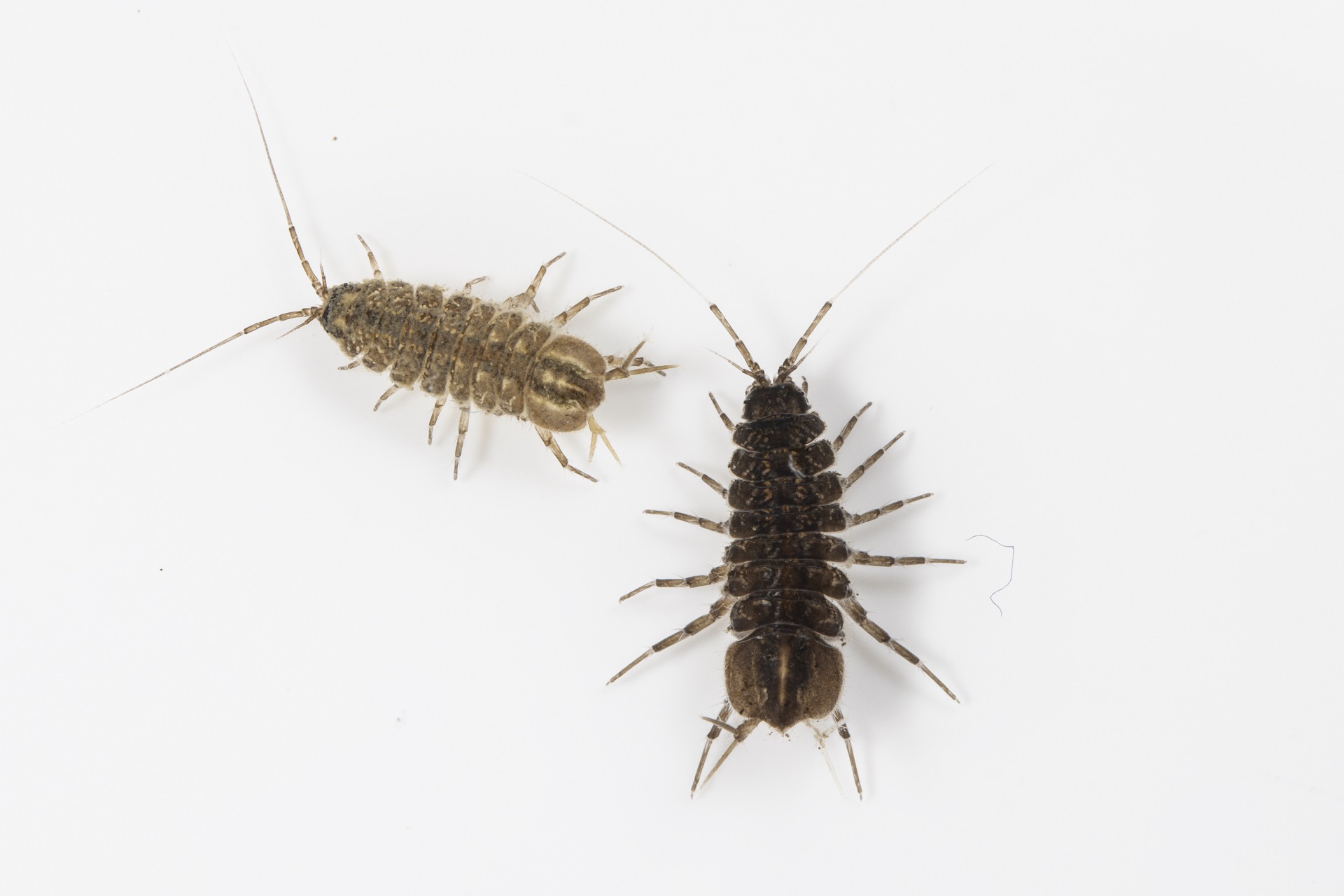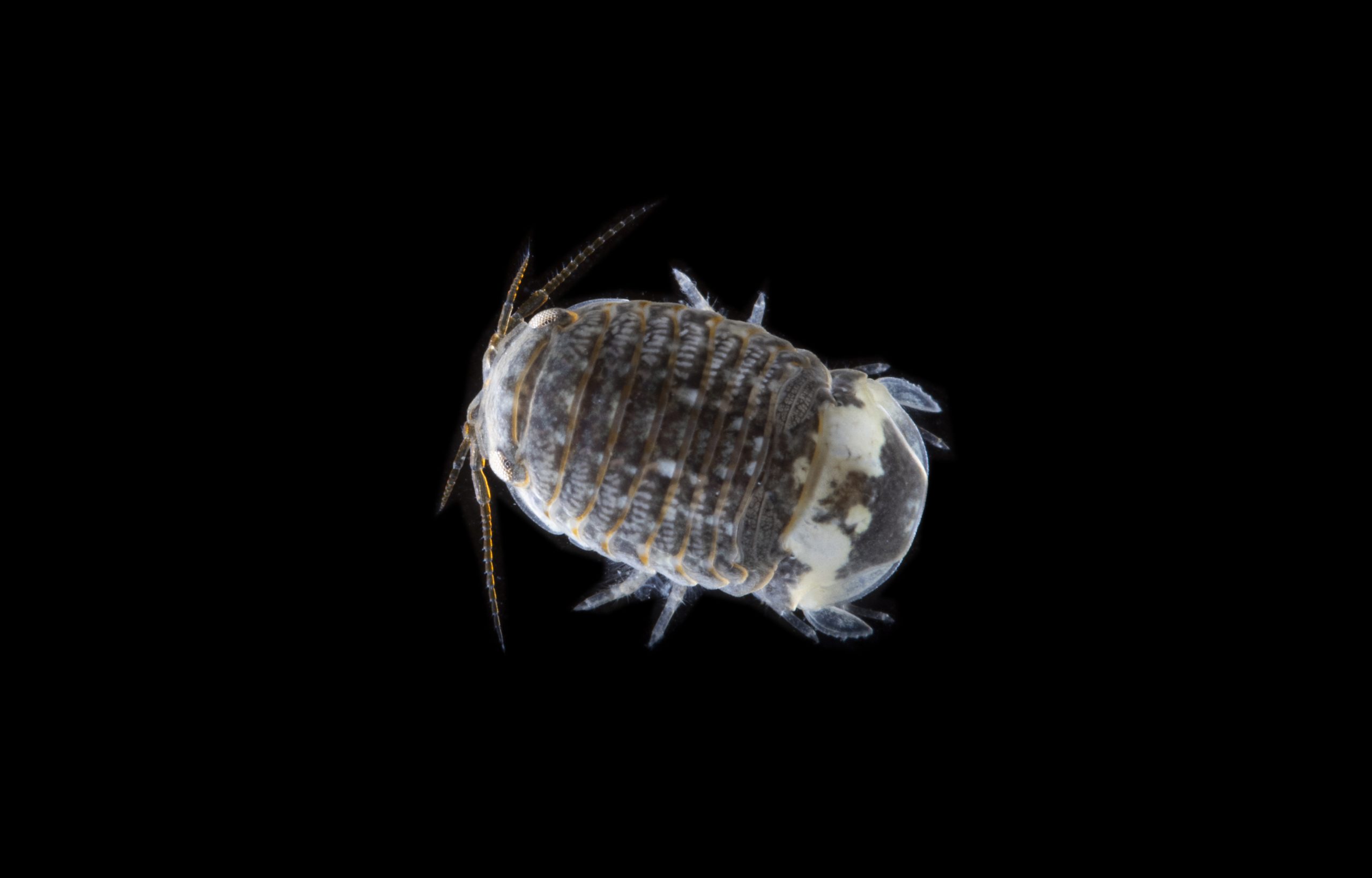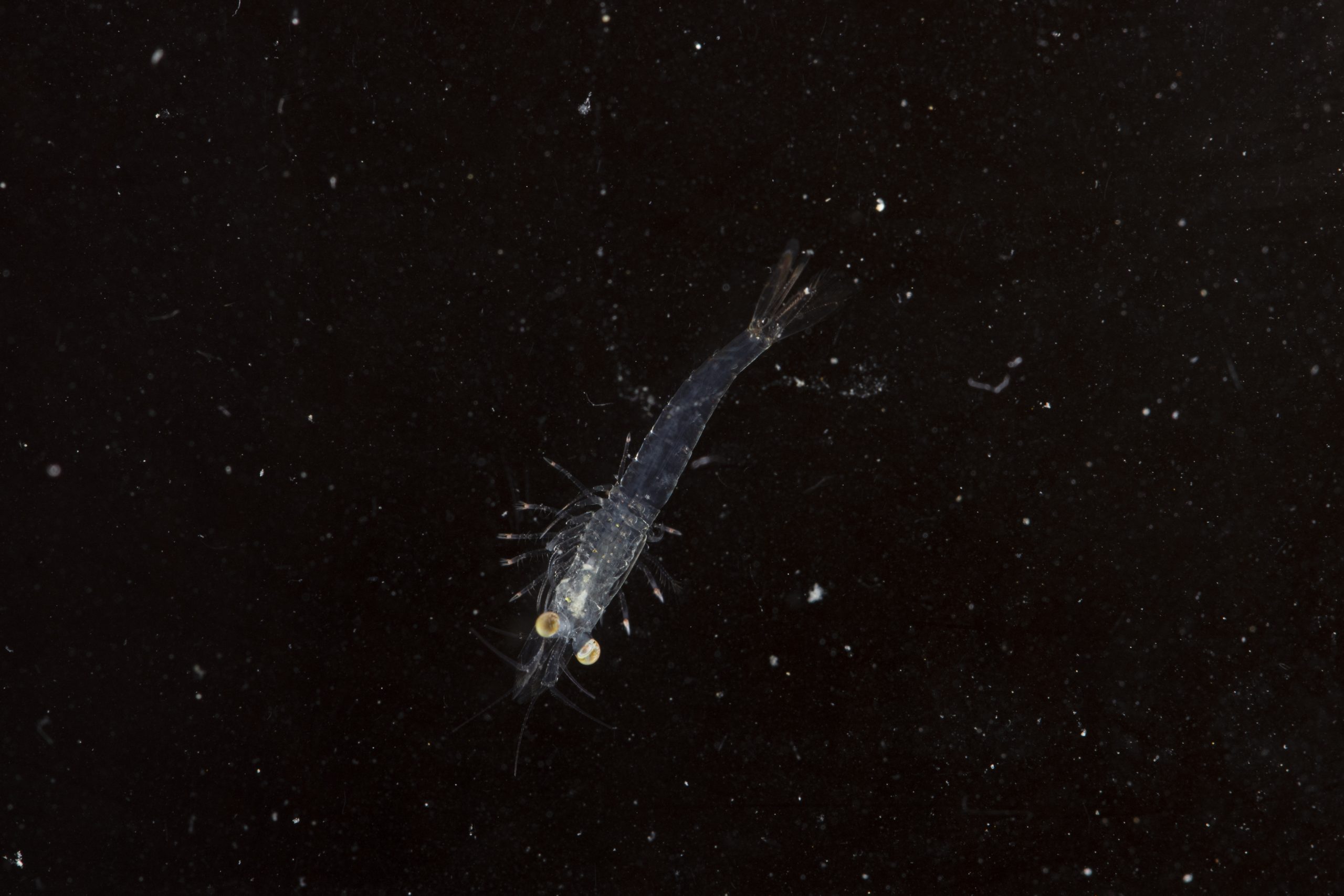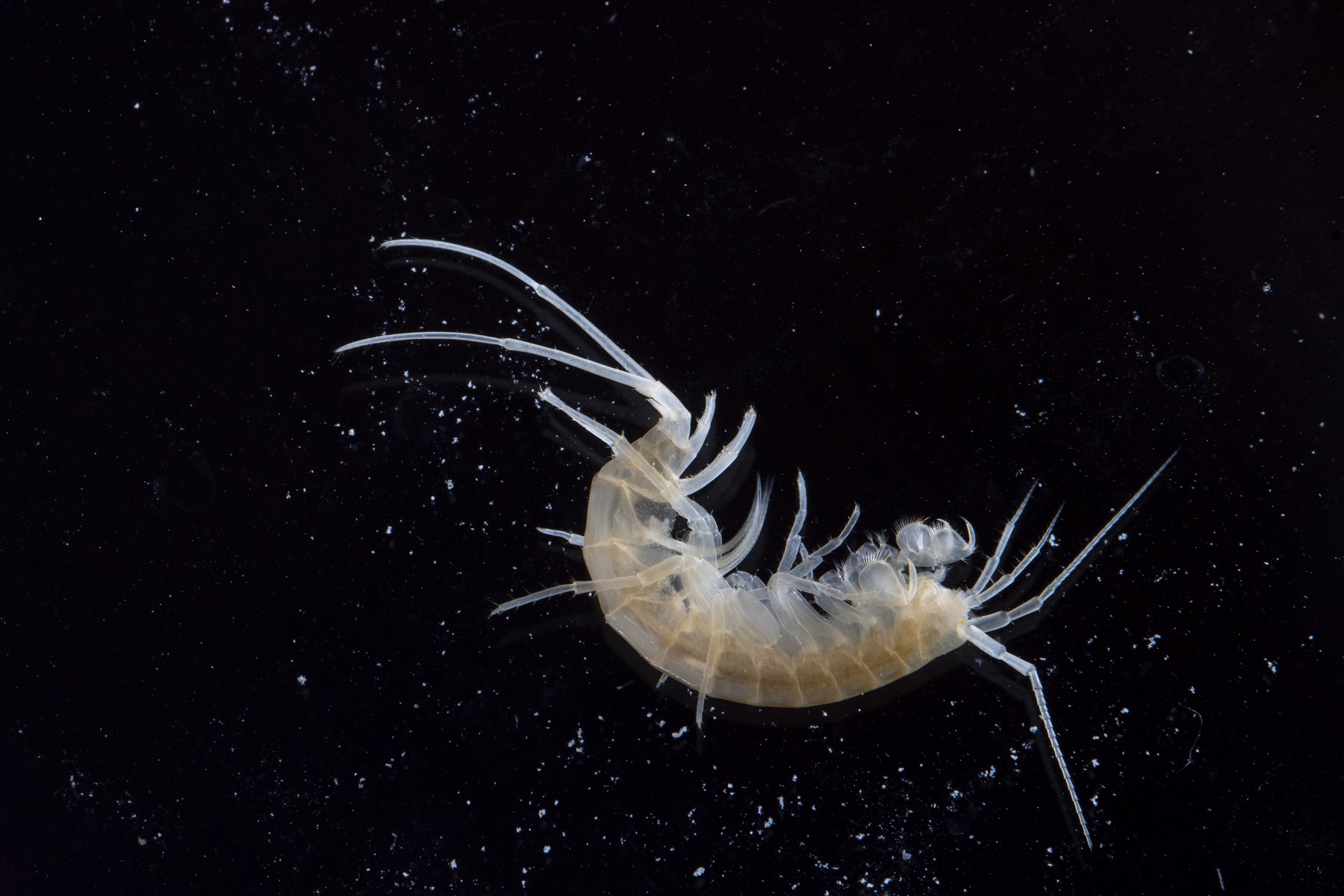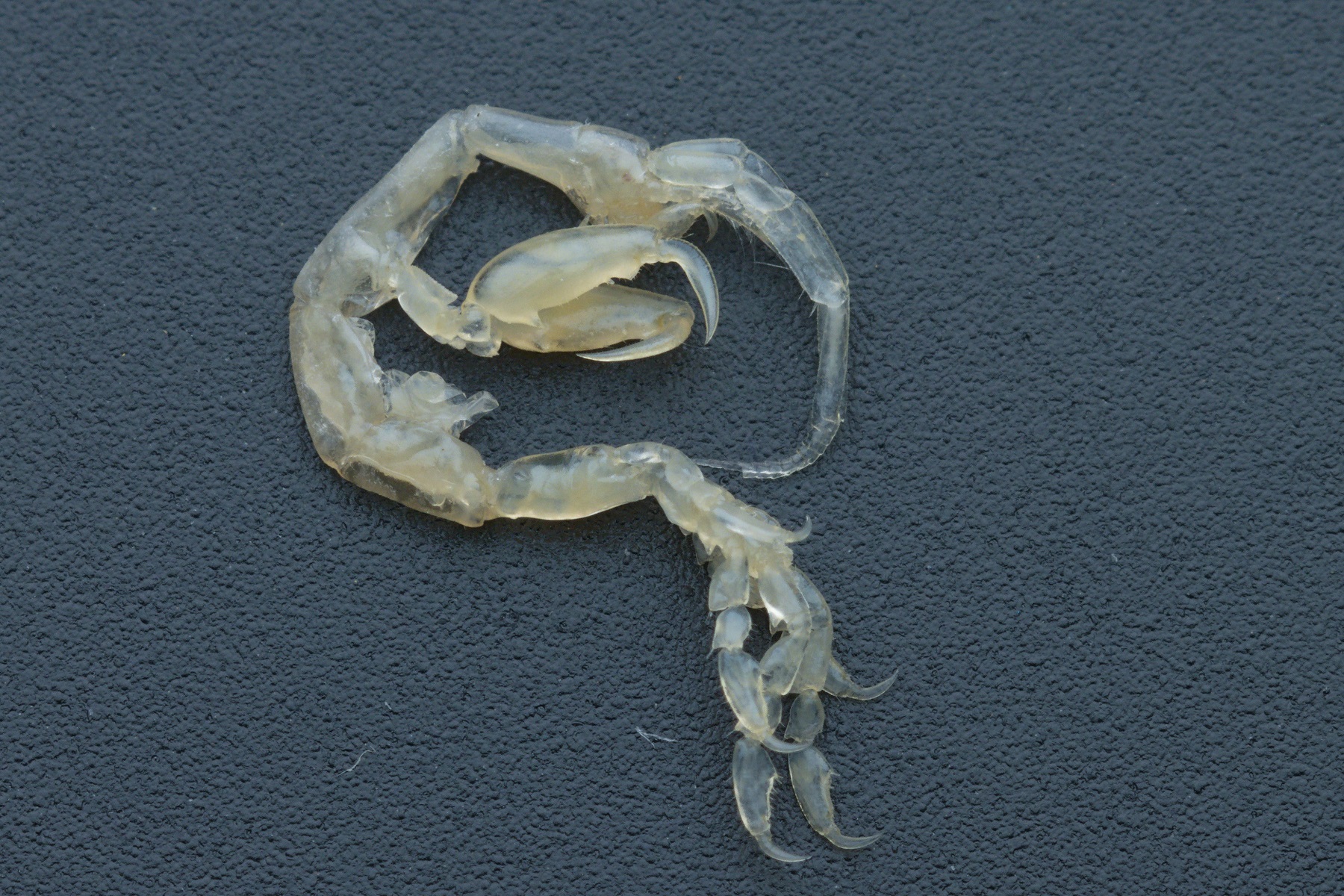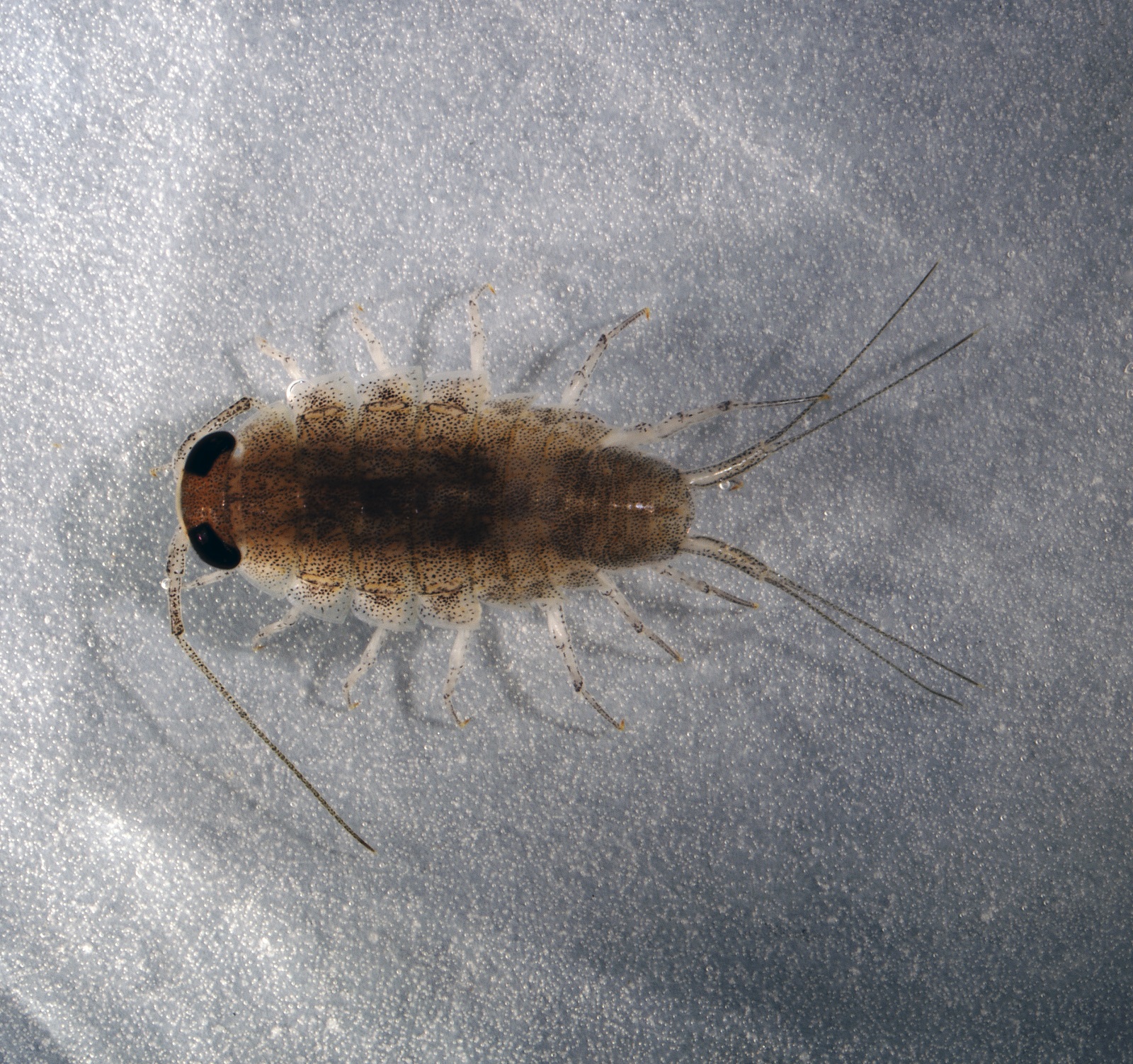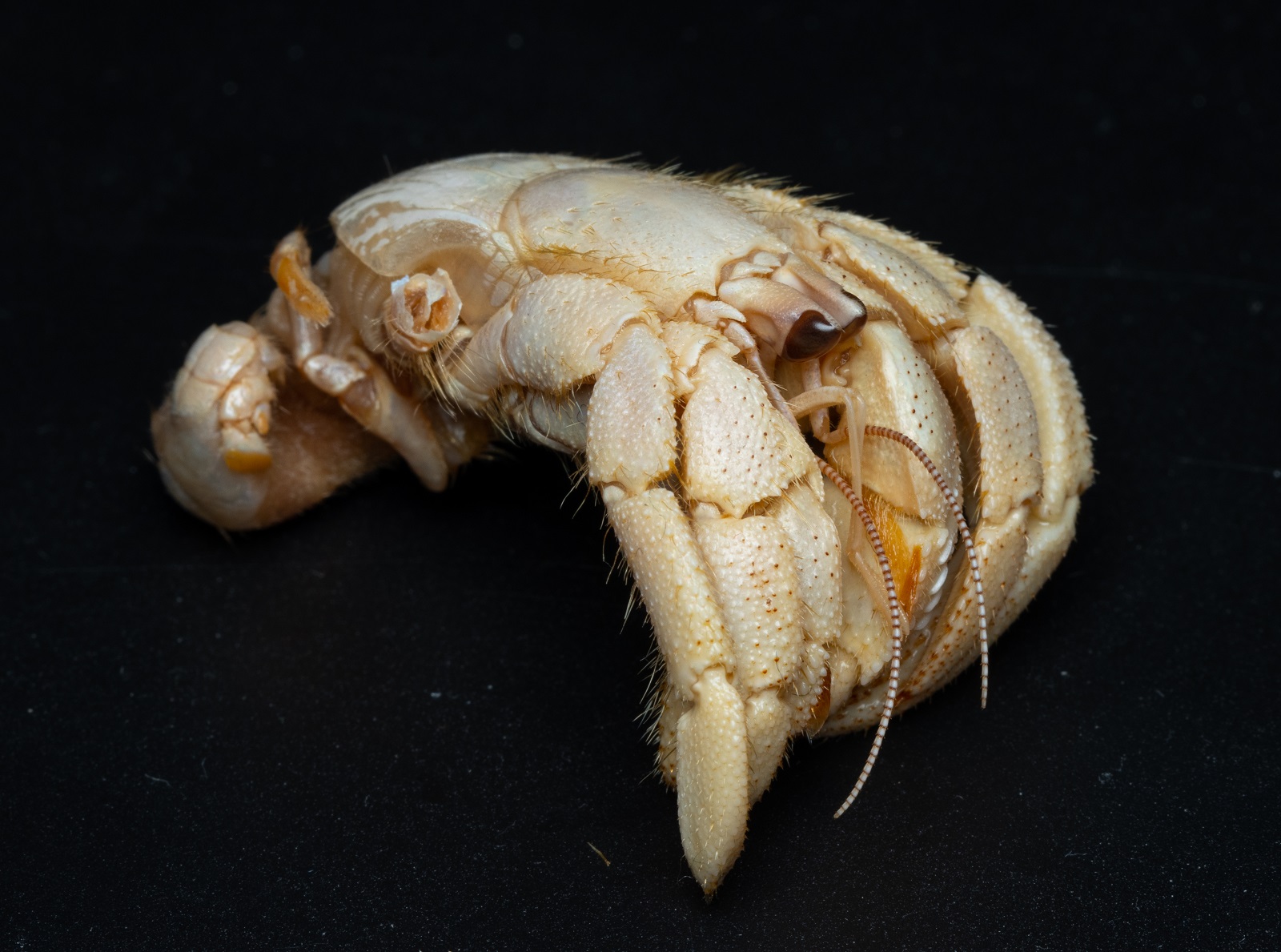- Crustaceans
Caprellidae
Skeleton shrimps are highly modified amphipods (Amphipoda) with a fragile, stick-like body and reduced number of legs. Generally, they are around a centimeter long, rarely longer. Their bodies consist of a cephalothorax, pereon and a short abdomen.
The cephalothorax, consisting of an acron and six anterior body segments, carries eyes, two pairs of antennae (antennae I and II), a pair of mandibles, two pairs of maxillae (maxillae I and II) and a pair of maxillipeds.
The pereon is comprised of seven segments, each carrying a pair of legs (pereopods), which are partially reduced. The first two pairs are raptorial gnathopods. The appendages on the third and fourth pereonic segment are reduced, with gills and oostegites that form marsupium in females being the only remnants of appendages on these segments. The last three pairs of pereopods are smaller than gnathopods and used to cling to the substrate.
The abdomen is reduced to a variable degree.
The skeleton shrimps are exclusively marine animals with worldwide distribution. They rarely swim. Primarily they move in an inchworm fashion, alternately attaching to the substrate with anterior and posterior pereopods. Most of the time they cling to eelgrass, algal turfs, hydroids and bryozoans, among which they live. Their body shape and color allow them to camouflage in their environment in an amazing example of mimicry. Some are predators that catch prey in similar fashion to praying mantises, some feed on hydroid polyps, and some are filter feeding detritivores. A few species are invasive.
More photos
Related arthropods

Authors
- Urban Bogataj,
- Gregor Bračko,
- Teo Delič,
- Cene Fišer,
- Žiga Fišer,
- Rok Kostanjšek,
- Rudi Verovnik,
- Miloš Vittori,
- Valerija Zakšek.
Students Vito Ham, Vesna Jurjevič, Gaj Kušar, and Adrijan Samuel Stell Pičman also participated in the project.
